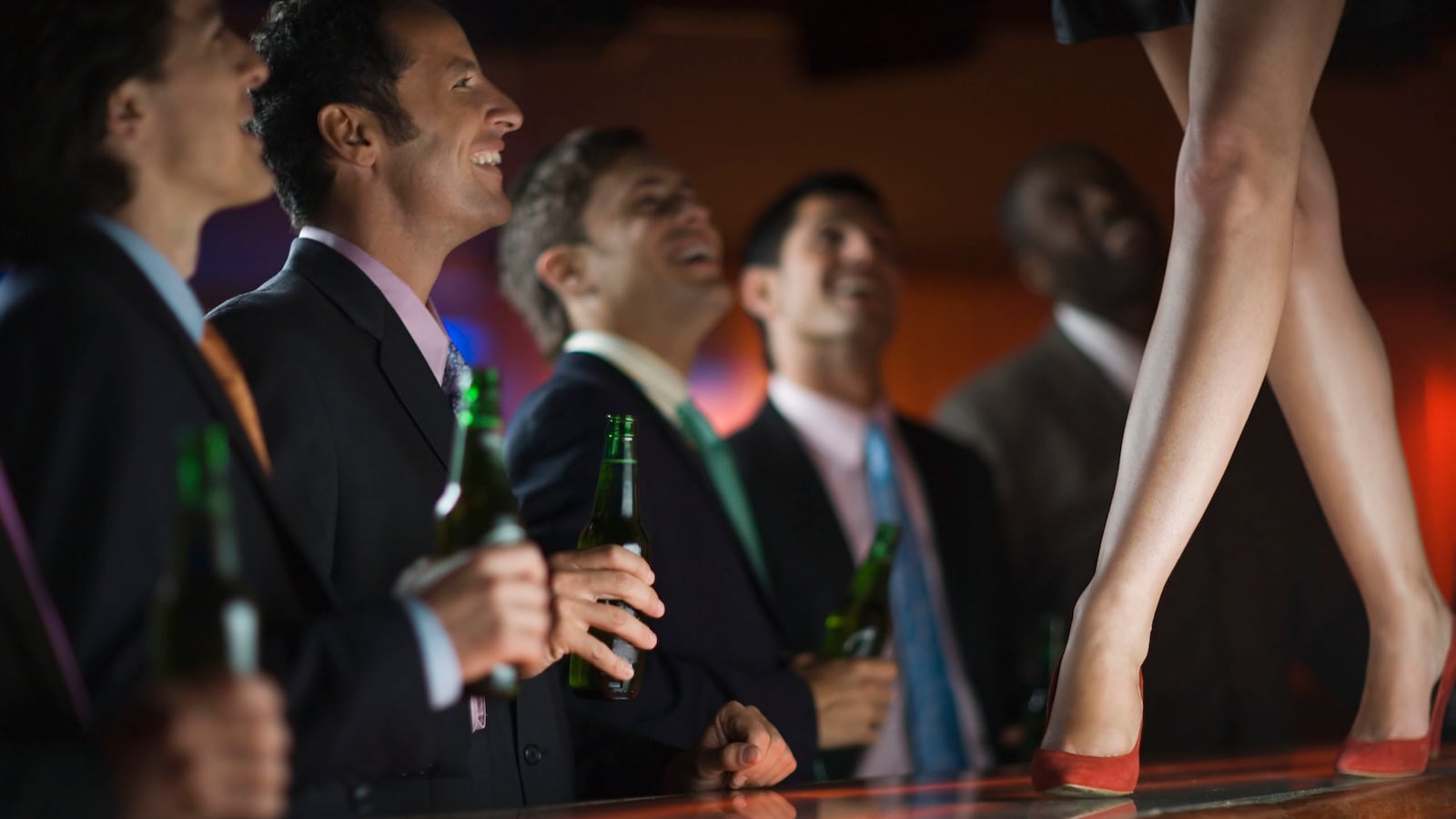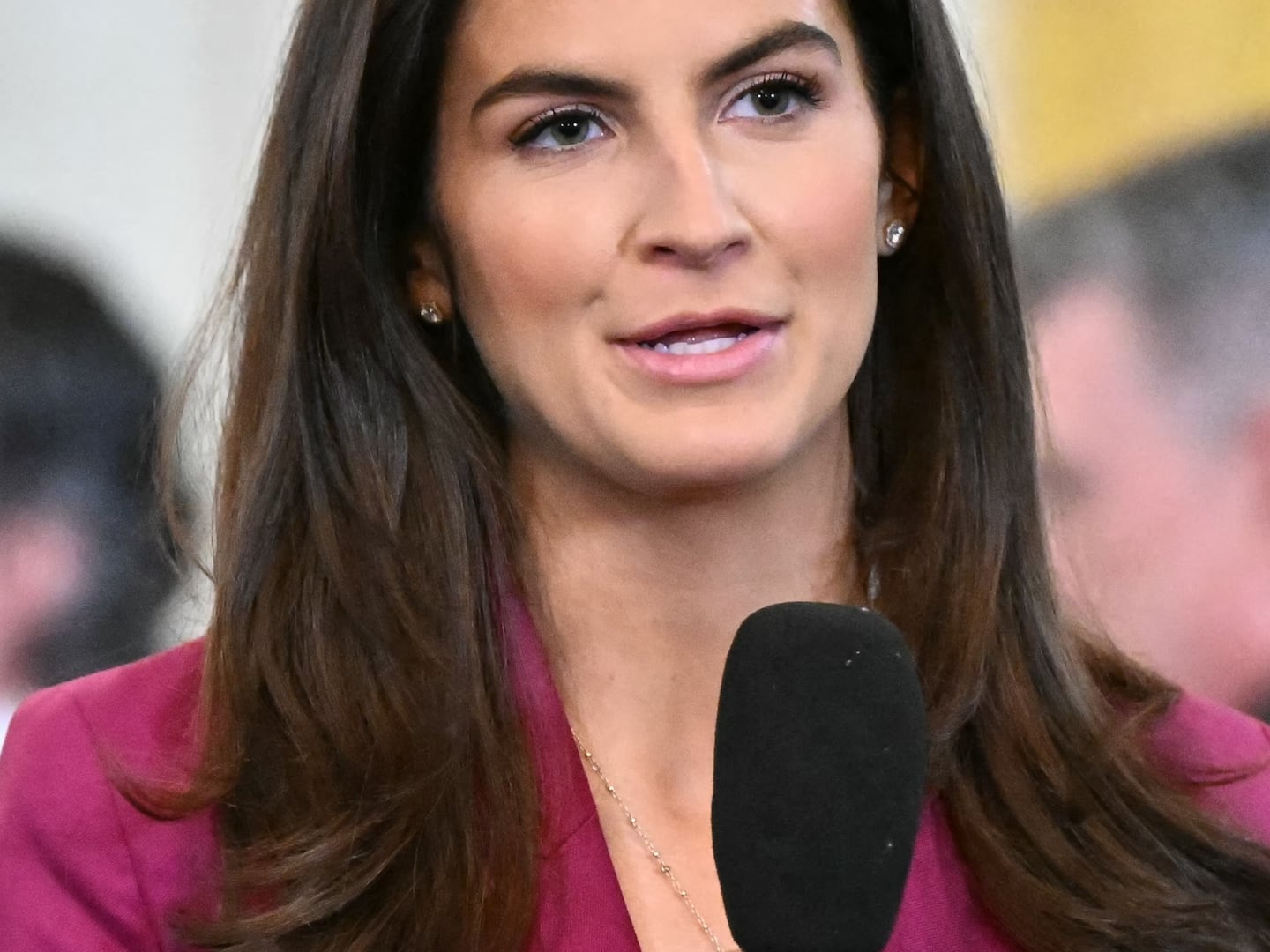The fabric store closes in 30 minutes. Amber Dawn Peterson has a half-hour to find the va-va-voomiest buttons for a dress she’ll wear on the biggest night of her life. Though she has her pick of French Quarter costumers, she’s chosen Jo-Ann Fabrics, deep in the suburbs of New Orleans, for its sales.

Here, other women putter with practical cotton plaids, worthy of a school uniform. But Amber fingers a blood-spattered lace and a black webby fabric in the Halloween section; she spots a sequined hot pink panel and mentally fashions it into a flippy go-go dress.
We only linger in the cloth section, because Amber already has a dress—full-skirted with a nipped waist—to wear to the national finals of the U.S. Bartenders’ Guild (USBG) “Most Imaginative Bartender” contest, sponsored by GQ and Bombay Sapphire. It’s no coincidence that her dress is a tropical sapphire print.
When I first met Amber, she was behind a bar of local restaurateur Dickie Brennan’s, and wearing a bland, crisp chef’s coat. I should have guessed—from her frank gaze, fiery hair half-tied up with a flower, doe eyes of a 1940s pinup, and sturdy yet graceful movements—that she was a performer. So many bartenders are. She ran the restaurant’s bar program, not only training the floor staff on a skyline of cocktails, but also writing original drink recipes—nearly a hundred, by her count—until this past July, when she was let go.
In the fabric store, pale blue Mason jars remind her of the gorgeous blueberry-basil shrubs and honey-cinnamon syrups she spun for those cocktails. When Amber lost the job, “I was gutted,” she admits. “But anxiety is a good thing. I use it as a call to action.” Near the Mason jars are foam heads, the kind a showgirl uses to style her wigs. Amber once wore chocolate curls for a burlesque act dedicated to her late mother, Laurie, who raised her only daughter bohemian-style, stacking their Toledo house with erotic paintings and Playboy magazines. Laurie stitched costumes for a local dinner theater, and it was in her sewing room (hunched over green lamé) that she revealed to her daughter that she’d performed as a go-go dancer in Larry Flynt’s Hustler Club. Amber didn’t immediately go that route. After brief runs in community theater and college, she hit the road with a Renaissance fair troupe. She could have auditioned to be the tavern wench or a faerie; instead, she signed on as a merchant, knitting chain-mail bikinis. It was a precarious life, tented on the fairgrounds with all earnings in cash. Fellow players banded together if they were threatened, but when the gates opened “it was a competitive, carnie mentality,” Amber remembers. “A ‘you’ve got my dollar in your pocket’ kind of thing.”
Still, “They were my island of misfit toys,” she says, adrift. I glimpse an alarming, finger-length aluminum baton in her bag. “You ever use that?”
“No.” “Where have you felt most threatened?”
“Not where you think.” That is, not in a dance hall or behind the bar or even as a Rennie.
While living in the Alaskan wild (after following a boyfriend there), Amber wrestled a hundred-pound halibut (before shooting it in the face), scared off killer sea lions, and survived a flipped kayak in Class IV rapids.
Then there was the black bear, which chased her, and an industrial pan of lasagna, down a wooden path. Like any seasoned performer, she used the best available props, scrambling on top of a guardrail and banging the metal tray with her serving tongs. “You’ve got to get loud and act big,” she advises. In 2004, Amber birthed her alter ego, a stripteaser named Oosha Boom. Modern burlesque had, by then, shed its reputation for seedy strip clubs and desperate acts. The revival swept in glam costumes, elegant choreography, and cheeky fun, sometimes weaving in social commentary. (On stage, Amber spoofed Sarah Palin in a topknot and librarian glasses, yanking a toy gun and stuffed moose from her skirt.)
Burlesque artists are often in it for the costumes, spending what they earn on fabric, feathers, and crystals. Experts work on the most complex illusions—dresses sewn together with rigging between the fabric that lets one fall away with a well-timed tug. In this business, a wardrobe malfunction is the piece of clothing that won’t come off.
It’s been a year since Oosha Boom last performed at Siberia, a metal club in New Orleans. It was a typical day: Amber lined up her digital music with the deejay, then primped in a red-curtained back room. Getting to the stage called for an awkward walk through the bar area. Her act lasted about four minutes, and ended in pasties and a G-string.
After the show, Amber met the crowd in a silk dressing gown (and no, men don’t typically hit on burlesque dancers; “we’re untouchable,” she says).
While Amber was performing burlesque, she was also building a parallel career as a bartender, and she did it the right way – starting as a bar back running ice and juicing fruit, then apprenticing with senior bartenders.
Her creative soul and sparkle dovetail with today’s taste for specialty drinks and a good story.
In the accessories aisle, I watch as she plucks a brilliant blue peacock feather to make a headdress to wear to the Vegas competition. Her reversal of luck has been just as dramatic.
Only weeks after losing her job, she won the GQ/Bombay Sapphire local semifinal contest in New Orleans, against nine other competitors, with an emotionally-charged drink inspired by her grandmother Annabelle. Gin and white vermouth shaken with salted pomegranate syrup, dappled with rosewater.
That night, Amber’s cocktail choreography kicked in, and she garnished her coupe glasses with seconds to spare: “The Rose Nylund cocktail, as served by Blanche Devereaux!” While grandma Annabelle loved Rose (and a good gin), Amber identifies with the Golden Girls’ resident naughty-pants.
Like its namesake, the Rose Nylund is simple and appealing. It’s what industry experts say a winning cocktail should be—easily translated to bars worldwide; a modern classic, maybe.
Amber took Rose Nylund to the national finals in Las Vegas, along with four suitcases for her costume changes, bar tools, and booze, where dozens of competing bartenders and a panel of top-shelf judges waited.
Her biggest surprise, she said, was realizing how much presentation and technical points mattered. International Bartender’s Association rules are tight; you can’t spill or under pour, and bottle labels should always face your guests—or, rather, the judges.
While Amber didn't win—that honor went to Ran Duan, a Massachusetts bartender and Johnson & Wales graduate—she was right at home in the competition. After all, the USBG coaching handout states, “Bartenders are storytellers. The cocktail is their story, and the ingredients are its cast of characters.”
After the competition, there was a GQ fashion shoot (Amber wore a tan, lace-covered sheath) and an impromptu bartender “draining of the bottles” party to empty their contest booze. Later, at the Rose.Rabbit.Lie club, Amber spontaneously sing “Proud Mary” with a cabaret singer.
And she wore the buttons we finally found in the fabric store. They’re made of blue rhinestones that shimmy in the light.






